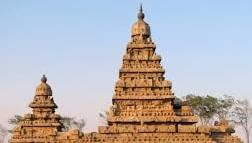- Top 10 Tips To Survive A Beach Vacation With Toddlers
- How To Choose The Perfect Banquet Hall In ECR For A Corporate Event?
- 5 Interesting Tips To Host The Astonishing New Year Party At Mahabalipuram Resort
- 5 Impressive Valentine’s Day Ideas To Revive The Spark Of Love
- 5 Ways to Make Sure You are Booking the Right Hotel in ECR
- Top 7 Reasons to Visit Hotel Mamalla Heritage at ECR, Chennai
- Things You Should Expect from the 3-Star Hotels in ECR
- Why Do People Love to Visit Beach Resorts at Mahabalipuram?
- How Do Hotels at Mahabalipuram Increase Their Guest Survey Response Rate?
- Recent Inevitable Changes in the Hotel Industries
- Why ECR Hotel Managers are Investing in Modern Technologies?
- Are ECR Hotels Ready for Voice Technology?
- Top 5 Reasons How Hotels in ECR Can Change Customers Perspective!
- 5 Reasons Why Should You Spend Your Next Vacation at ECR Hotels?
- What Will Be the Guest Expectations in ECR Hotels?
- Top 4 Reasons Why Hotel Mamalla Heritage Stole the People Hearts
- Why Resorts in ECR are the Best Place for Corporate Team Outings?
- Top 5 Ways to Enhance Your Stay in ECR Resorts
- Things You Need to Know about ECR Resorts before Choosing the Best One
- Why Do You Need to Answer These Five Questions before Making Reservation?
- Top 4 Places to Visit in South India in this Summer
- Enjoy an Exotic Stay in a Mahabalipuram Beach Resort
- 7 Questions You Must Ask When Checking into Your Hotel
- 10 Things Should Keep in Mind When Booking a Hotel
- Top 7 Tips for Getting the Best Rates on Hotels
- 15 Ingenious Tips to Improve Your Stay
- 5 Must Do Tips for a Hotel Room Stay
- 5 Extraordinary Hotel Stay Tips for the Travelers
- Tips for Planning Your Trip and Booking Accommodation
- 5 Steps to Booking a Hotel Deal Anytime
- Top 12 Hotel Safety Tips Travelers Should Never Ignore
- 10 Money Saving Hotel Tips That Make a Family Vacation Affordable
- Tips for a Perfect Stay in Mahabalipuram
- 10 Hotel Booking Secrets You Need to Know to Get the Best Deals
- Top Hotel Booking Mistakes (and How to Avoid Them?)
- Top 7 Tips When Making Hotel Reservations
- Significant Travel Tips to Get Low Budget Travel Packages
- Tips to Find Low Priced Luxury Hotels
- Looking for a Good Hotel to Stay Read This Article
- Tips on How to Find the Best Holiday Accommodation Deals Online
- 7 Tips for Smarter Travel Booking
- Tips to Ensure a Pleasant Stay in Hotels
- Top 6 Accommodation Booking Tips to Save Money
- 10 Hotel Booking Secrets You Should Need to Know
- 5 Mistakes You Should Avoid While Booking Hotels for Business Travel
- 15 Ways to Attract & Motivate More Guests to Stay at Your Hotel
- 5 Smart Ways to Improve the Look of Your Hotel Rooms
- 10 Hotel Trends to Shape Your Guest’s Experience in 2017
- Surprising Hotel Tips Everyone Needs to Know
- Significant Tips for Planning a Road Trip
- Six Safety Tips You Should Follow on Hotel Stay
- Why Should We Embrace Home Stays on Next Vacation
- How to Pick a Perfect Banquet Hall in Mahabalipuram for Your Corporate Events
- Personal Security Tips for Hotel Stays
- Tips to Make Online Hotel Booking Easier
- Safety Tips for Hotel and Resort Vacations
- 6 Questions to Ask Before Booking a Hotel Room
- 5 Smart Tips to Having a Great Hotel Stay
- 5 Surprising Hotel Tips Everyone Needs to Know
- How to Find the Perfect Luxury Hotels
- The Best 10 Ideas for Hotel Management
- Top 10 Tips to Find the Perfect Meeting Venue
- Tips to Book Your Hotel Room as Wedding Guest
- Top Hotel Secrets from Behind the Front Desk
- Best Tips to Stay Sane with a Baby in a Hotel Room
- Some Best Tips for Avoiding Ridiculous Hotel Fees
- Some Useful Things Hotels Usually Provide for Free
- The Roaring Secrets of Tiger Cave in Mahabalipuram
- 8 Best Things to Do in Mahabalipuram with Girlfriend
- History of Shore Temple in Mahabalipuram
- Five Technologies Used in Hotel for a Better Guest Experience
- 10 Marvellous Things to Do in Mahabalipuram
- 21 Proven Ways to Prevent Hotel Room Theft
- Best Hotel Security Tips One Should Need to Know
- How to Behave in a Hotel?
- 10 Things You Should Not Do When Booking a Hotel
- Smart Ways to Improve Your Hotel Booking Experience
- 10 Ultimate Hotel Booking Tips That Will Save Your Money
- 10 Hotel Booking Mistakes and How to Avoid Them?
- 12 Things to Ask for When You Check into Your Hotel Room
- 5 South India Holiday Experiences That You Should Not Miss
- How to Select a Secure Hotel for Your Stay?
- 10 Places to Visit in Mahabalipuram
- How to Pay for Online Hotel Bookings?
- Money-Saving Tips for Hotel Bookings
- Top 10 Traditional Foods to Eat in Mahabalipuram
- 15 Gorgeous Unexplored Places in South India
- 3 Challenges and Opportunities Online Hotel Booking Sites Face
- 12 Things All Family-Friendly Hotel Rooms Should Have
- 5 Travel Goals to Fulfil in India with the Love of Your Life
- 10 Basic Things a Hotel Must Offer Guests
- 5 Tips to Find the Best Cheap Hotel Deals Online
- 10 Hotel Booking Mistakes And How To Avoid Them
- 10 Ways to Sleep Better at a Hotel
- 7 Architectural Wonders of India
- 3 Mahabalipuram Warning or Dangers You Should Know
- Best Ways to Choose Cheap Hotels in Mahabalipuram
- 5 Best Places to Visit in South India
- Make Your Holiday Memorable by Visiting Mahabalipuram
- 5 Reasons Why Solo Travelling Makes You Awesome
- How to Reach Mahabalipuram from Chennai by Road?
- 10 Best Places to Stay in India with Stunning Water Facing Views
- How to Prevent Bed Bugs in Hotels?
- Top 5 Towering Temples of South India
- Tips for Booking Hotel Online
- Why People Prefer Mahabalipuram as a Destination in Summer Vacation?
- Finding the Best Hotel Stays?
- What are the Glorious Secrets behind Mahabalipuram Beach Hotels?
- 10 Rare Historical Gems of India
- Taste the Traditional Food with the Touch of Culture
- Cave Temples of Mahabalipuram
- 5 Fascinating Facts about Hotels in Mahabalipuram
- Best Summer Trips 2016
- Top 6 Places to Spend Your Summer Holidays in Chennai
- Make Your Vacation Safety in Mahabalipuram
- Hotels in Mahabalipuram
- Cheap Hotel in Mahabalipuram
- Choose the Best Hotels in Mahabalipuram
- Mahabalipuram and Low-Budget Hotels
- Ways to Find the Best Hotels in Mahabalipuram Beach
- What to Look for before Planning a Trip to Chennai?
- Things Not to Do While Booking a Hotel in Mahabalipuram
- The Best Ways to Find the Right Hotel near Mahabalipuram
- Why You Should Make Your Booking Directly with the Hotel in Mahabalipuram?
- Exclusive Tips for Mahabalipuram Hotel Booking
- Luxury Hotels Versus Budget Hotels in Mahabalipuram
- Cheap Hotels in Mahabalipuram
- Factor to look Out: Beach Hotels in Mahabalipuram
- Good Hotel in Mahabalipuram
- Best Mahabalipuram Hotel: 7 Things That No More Exist
- Finding the Best Hotels in Mahabalipuram
- Best Hotel in Mahabalipuram
- Mamallapuram–A Symphony in Stone and Sand
- Keep a Look Out for Cheap Hotels in Mahabalipuram When You are Headed for the Southern Paradise
- Posts tagged with budget hotels in Mahabalipuram
- Best Tourist Spots near Mahabalipuram
- A Brief History of Mamallapuram
- Why Mahabalipuram is the Best Tourist Spot in South India?
- What to Do on Your Next Trip to Mahabalipuram
- Posts tagged with Good hotels and Rooms Stay in Mahabalipuram
- Posts tagged with mahabalipuram hotels
- Posts tagged with cheap hotels in Mahabalipuram
- Tips to Find a Suitable Hotel in Mahabalipuram
- Top 5 Tourist Attractions in Mahabalipuram
- Things to Remember While Booking Your Hotel in Mahabalipuram
- A Short Tourist Guide to Mahabalipuram
- The Cave Temples of Mahabalipuram
- Things to Do in Mahabalipuram
- The Secret of the “Seven Pagodas”
- Weird But True: The mystery of the balancing rock of Mahabalipuram
- Significance of Arjuna’s Penance in Mahabalipuram
- A visitor’s guide to The Monolithic temples of Mahabalipuram
- Mahabalipuram: A perfect place for a retreat

A visitor’s guide to The Monolithic temples of Mahabalipuram
Tourists and visitors come to Mahabalipuram to have a good time and admire the ancient architectural achievements that are a testament to the art and culture of the Pallava era.
(Note: A ‘monolith’ is a geological feature consisting of a single massive stone or rock, such as some mountains, or a single large piece of rock placed as, or within, a monument or building.)
There are nine monolithic temples or locally known as Ratha’s. The five best Ratha’s were named after the Pandavas. The structural design and planning that went into carving these temples is something archaeologists revere.

The five Ratha’s:
- Dharmaraja Ratha
- Bhima Ratha
- Arjuna Ratha
- Draupadi Ratha and
- Nakula-Sahadeva Ratha
Dharma raja Ratha:
The biggest among the five
Bhima Ratha:
Many historians believe it’s built on palace style architecture. There have been comparisons to palace building style owing to its barrel vaulting and long columns. The roof of the Ratha resembles a boat, a pillared open space in front and a column with a lion sculpture.
Arjuna Ratha:
It’s a simple structure carved out of an elongated rock formation with small rising slopes from north to south or its circumference. It has a square build similar to the Dharmaraja Ratha.
Draupathi Ratha:
The Draupathi Ratha is filled with carvings of Durga especially in the sanctum and the east side wall. Two female guards are depicted in the doorway.
Nakula-Sahadeva Ratha:
The speciality of this Ratha is, when it is viewed from the entrance gate it looks like the back of an elephant which gives it another name gajapristha (back of an elephant).
Rathas it stands three stories tall structure. The sculptures surrounding the structure show various forms and depictions of Shiva.
Dharma raja Ratha:
The biggest among the five
Bhima Ratha:
Many historians believe it’s built on palace style architecture. There have been comparisons to palace building style owing to its barrel vaulting and long columns. The roof of the Ratha resembles a boat, a pillared open space in front and a column with a lion sculpture.
Arjuna Ratha:
It’s a simple structure carved out of an elongated rock formation with small rising slopes from north to south or its circumference. It has a square build similar to the Dharmaraja Ratha.
Draupathi Ratha:
The Draupathi Ratha is filled with carvings of Durga especially in the sanctum and the east side wall. Two female guards are depicted in the doorway.
Nakula-Sahadeva Ratha:
The speciality of this Ratha is, when it is viewed from the entrance gate it looks like the back of an elephant which gives it another name gajapristha (back of an elephant).
Rathas it stands three stories tall structure. The sculptures surrounding the structure show various forms and depictions of Shiva.
Contrary to popular belief, Lorem Ipsum is not simply random text. It has roots in a piece of classical Latin literature from 45 BC, making it over 2000 years old. Richard McClintock, a Latin professor at Hampden-Sydney College in Virginia, looked up one of the more obscure Latin words, consectetur, from a Lorem Ipsum passage, and going through the cites of the word in classical literature, discovered the undoubtable source. Lorem Ipsum comes from sections 1.10.32 and 1.10.33 of "de Finibus Bonorum et Malorum" (The Extremes of Good and Evil) by Cicero, written in 45 BC. This book is a treatise on the theory of ethics, very popular during the Renaissance. The first line of Lorem Ipsum, "Lorem ipsum dolor sit amet..", comes from a line in section 1.10.32.
Contrary to popular belief, Lorem Ipsum is not simply random text. It has roots in a piece of classical Latin literature from 45 BC, making it over 2000 years old. Richard McClintock, a Latin professor at Hampden-Sydney College in Virginia, looked up one of the more obscure Latin words, consectetur, from a Lorem Ipsum passage, and going through the cites of the word in classical literature, discovered the undoubtable source. Lorem Ipsum comes from sections 1.10.32 and 1.10.33 of "de Finibus Bonorum et Malorum" (The Extremes of Good and Evil) by Cicero, written in 45 BC. This book is a treatise on the theory of ethics, very popular during the Renaissance. The first line of Lorem Ipsum, "Lorem ipsum dolor sit amet..", comes from a line in section 1.10.32.

Contrary to popular belief, Lorem Ipsum
Contrary to popular belief, Lorem Ipsum is not simply random text. It has roots in a piece of classical Latin literature from 45 BC, making it over 2000 years old. Richard McClintock, a Latin professor at Hampden-Sydney College in Virginia, looked up one of the more obscure Latin words, consectetur, from a Lorem Ipsum passage, and going through the cites of the word in classical literature, discovered the undoubtable source. Lorem Ipsum comes from sections 1.10.32 and 1.10.33 of "de Finibus Bonorum et Malorum" (The Extremes of Good and Evil) by Cicero, written in 45 BC. This book is a treatise on the theory of ethics, very popular during the Renaissance. The first line of Lorem Ipsum, "Lorem ipsum dolor sit amet..", comes from a line in section 1.10.32.